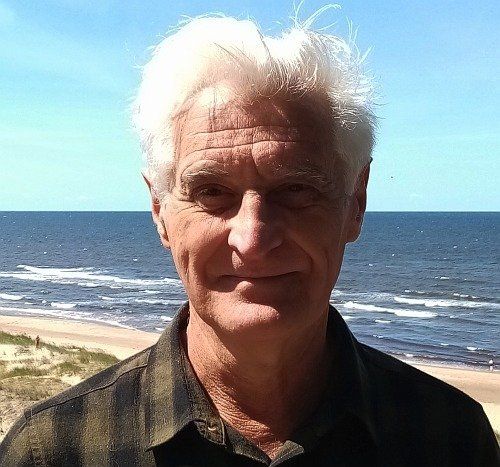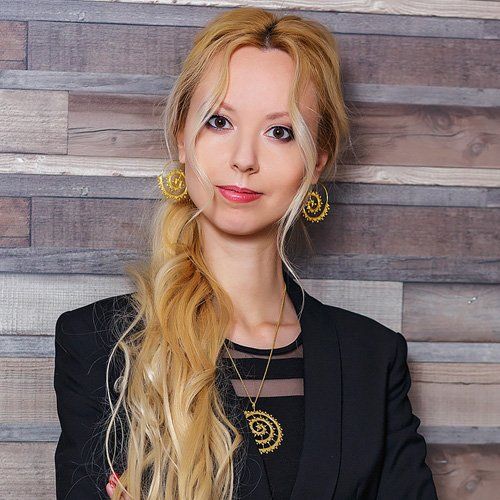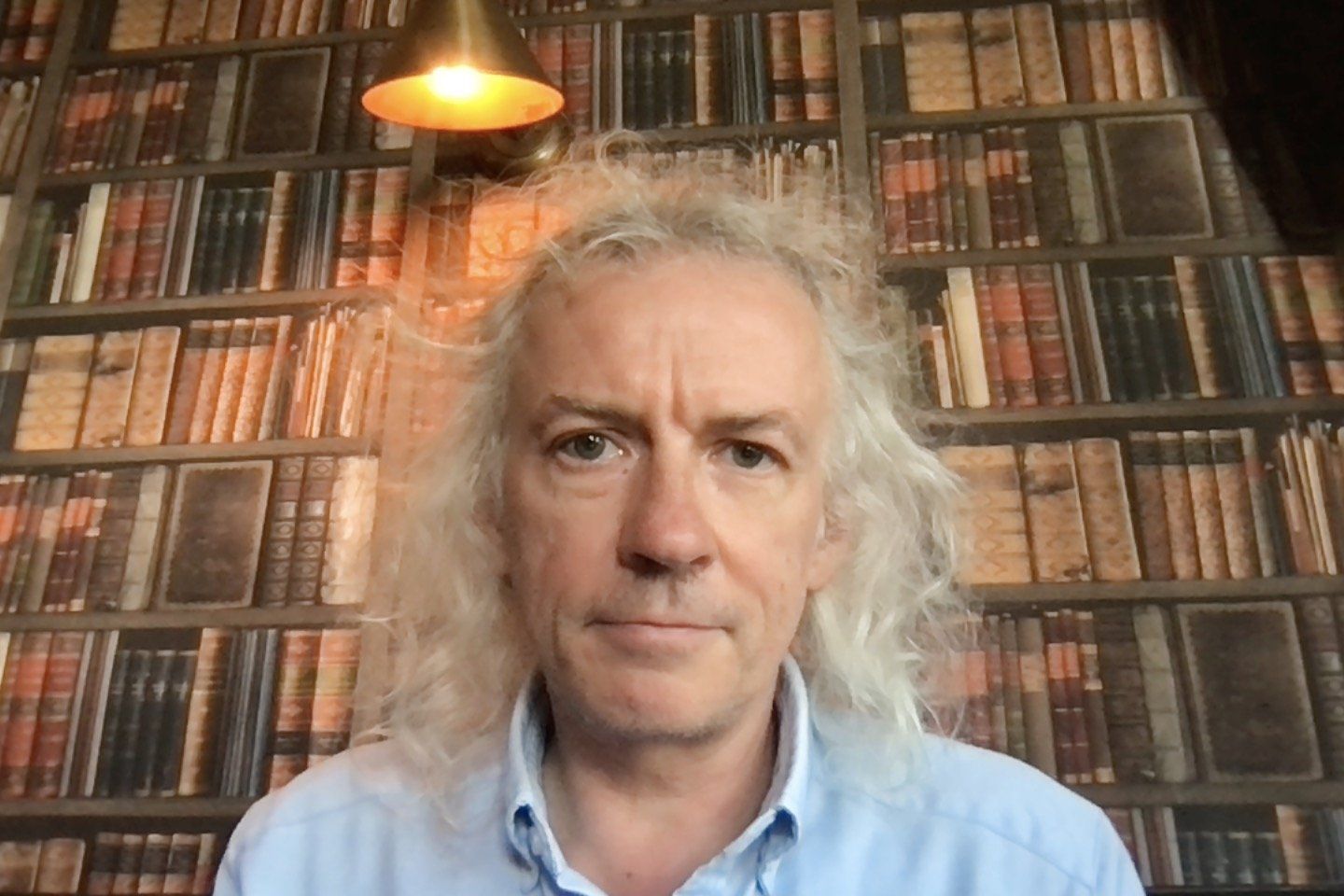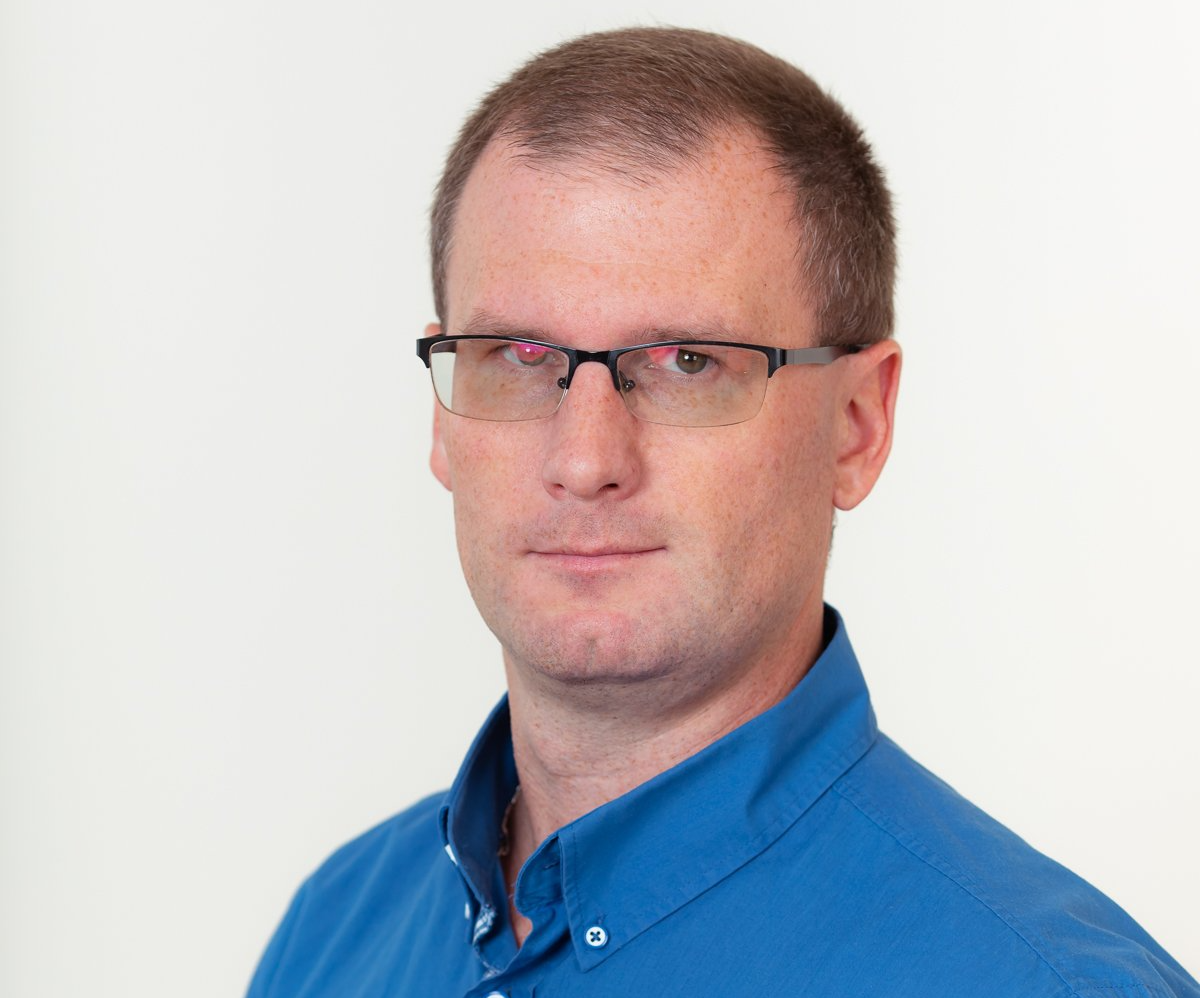This web page is created within BALTICS project funded from the European Union’s Horizon2020 Research and Innovation Programme under grant agreement No.692257.
International Workshop
"Solar-Stellar Connections, Flares, and Superflares"
August 4th, 2022, online
Dmitrijs Bezrukovs
VIRAC, Latvia
“Microwave observations of the Sun in VIRAC: possibilities, experience and prospects.”
abstract:
Microwave spectral polarimetric observations of the Sun remains one of main trends in solar physics providing direct and simultaneous measurements of magnetic fields and plasma parameters in the upper chromosphere and lower corona at different heights. First multi-channel microwave observations of the Sun were performed at Ventspils International Radio Astronomy Centre (VIRAC), Latvia in 2013. Nowadays VIRAC have a possibility to implement solar microwave observations for 2.1-7.5 cm wavelength range and both circular polarizations with RT-32 radio telescope equipped with the multi channel spectral polarimeter in the “single dish” mode. The presentation concerns technical, instrumental and methodical issues of microwave solar observations in VIRAC. Some particular tasks of solar physics which are expected to be solved on the base of microwave observations in VIRAC are also discussed.
BIO:
Dmitrijs Bezrukovs graduated at Riga Technical University in 1977 and for many years worked in areas of electrodynamics of ferromagnetic devices and physics of ferromagnetism as a scientific assistant and a researcher in the Institute of Physics and Energetics of Latvian Academy of Sciences, Riga. He joined Ventspils International Radio Astronomy Center (VIRAC) immediately after its foundation in 1994. During these times Dmitrijs worked there as electrical and radio electronic engineer, got a big experience in a practical radio astronomy, participated in numerous projects of VLBI, solar radio astronomy and solar physics as a researcher and leading researcher. He got the Dr. Phys degree in astronomy and astrophysics in 2013 studying the microwave emission of solar active regions associated with large isolated sunspots and open magnetic field areas. Today his main interest and deal in VIRAC is the implementation of microwave spectral polarimetric observations of the Sun with the radio telescope RT-32 and the observational data analysis. Studies of coronal hole-like structures and open magnetic fields as an eventual source of the slow solar wind on the base of microwave observations is another his scientific goal.
Valery Nakariakov
Warwick university, UK
“Magnetohydrodynamic Seismology of Solar Coronal Active Regions in the Radio Band. ”
ABSTRACT:
Reliable diagnostics of physical conditions and parameters in active regions of the solar corona is one of the priority areas of modern solar physics both for understanding the fundamental physical processes responsible for flare energy releases and mass ejections, and for practical problems of predicting extreme space weather events. Observation and analysis of oscillatory processes in the plasma structures of active regions, combined with the development of the theory of magnetohydrodynamic (MHD) waves in plasma inhomogeneities, make it possible to seismologically assess key physical parameters of the plasma, such as the magnitude of the magnetic field and its free energy, small-scale plasma structuring across the field, and transport coefficients.
Currently, the main source of input information for seismological diagnostics are observations from space in the EUV range. Insufficient temporal resolution of EUV-imaging telescopes and telemetric limitations do not allow observing several types of MHD oscillations, which are important for coronal seismology: such as sausage oscillations, packets of traveling fast magnetoacoustic waves, and kink oscillations of high spatial harmonics. New generation solar radio telescopes and interferometers, such as RATAN-600 in tracking mode, SRG, e-OVSA and, in the future, SKA, will allow achieving the necessary combination of spatial and temporal resolution and sensitivity for confident observation of these types of MHD oscillations and using them for seismological diagnostics. This possibility is illustrated by the available episodic observations of short-period MHD oscillations using the Nobeyama Radioheliograph, RATAN-600 and LOFAR. In particular, examples of identifying sausage and kink oscillations of plasma loops are considered.
BIO:
I graduated from the School of Radiophysics of Lobachevsky’s Gorky State University in 1989, and gained PhD in Plasma Physics at the Applied Physics
Institute of the Russian Academy of Sciences in 1994. In 1995-1999, I was a postdoc at St Andrews, UK, and since 1999 I’ve been having a permanent academic position (Full Professor since 2007) at Warwick, UK. My main research interests relate to the observational study and theoretical modelling of magnetohydrodynamic (MHD) wave process in the corona of the Sun, in particular, coronal plasma diagnostics by MHD waves, plasma astrophysics and radiophysics. For the development of the method of MHD seismology I was granted a Payne-Gaposchkin Medal and Prize. In 2013- 2018, I held an ERC Advanced Fellowship. In 2010-2013, I served as Chair of the UK Solar Physics Board, and in 2011-2014 as President of the Solar Physics Division of the European Physical Society. I am an Editorial Board member of the Solar Physics, Advances in Astronomy and Frontiers in Astronomy and Space Sciences journals. In the radio band, I have experience in the collaboration with the Nobeyama Radioheliograph and RATAN-600 teams, and am Co-Founder of the
Solar-Heliospheric Working Group of SKA.
Elena Popova
Universidad Bernardo O’Higgins, Chile
“Flare precursors.”
Abstract:
The term "space weather" refers to the totality of physical phenomena and processes on the Sun, in interplanetary and near-Earth space, the Earth's magnetosphere, ionosphere, and upper atmosphere, which have biomedical consequences and affect the functioning of technical means and systems. This refers to space industry, space missions, systems of navigation, communications, electric power industry, radiation safety during air travel, operation of pipelines, as well as means of an aeromagnetic survey, well drilling, etc. Thus, prediction of space weather is very important. Flare precursors are a key part of space weather prediction. The talk will give an overview of currently known solar flare precursors.
BIO:
Expertise: mathematical modeling of astrophysical processes
Elena Popova was graduated from the Physics Department of Moscow State (Lomonosov) University and received a PhD degree in 2012. She currently works as Head of Astronomy Research Center, Bernardo O'Higgins University, Santiago, Chile.
For the research in modeling the Solar Activity in 2017 she was awarded the Alexander Chizhevsky International Medal for Space Weather and Space Climate (ESA / European Space Agency, ESWW / European Space Weather Week) Medal Committee, Belgium).
Abhishek Srivastava
Indian Institute of Technology BHU, India
“Flares and Quasi-periodic Pulsations in Some Stellar Coronae.”
BIO:
Dr. Abhishek Kumar Srivastava is working as an Associate Professor at the Department of Physics, Indian Institute of Technology (BHU), India. Earlier, he worked as a Scientist at Aryabhatta Research Institute of Observational Sciences (ARIES), Nainital during 2008 to 2013. He was a Post-Doctoral Research Assistant with Prof. John G. Doyle at Armagh Observatory, United Kingdom in 2007. His research is mainly related to the multi-wavelength observations and modeling of waves, transients, and heating candidates in the Sun's atmosphere. He also pursues solar and stellar MHD seismology and QPPs. Dr. Srivastava has published more than 100 papers in prestigious peer-reviewed journals, including nature journals. He received Best Teacher Award in 2021 by IIT (BHU) for excellent teaching an training undergraduate, post-graduate and PhD students. He received Laxminarayana & Nagalaxmi Modali Award from the Astronomical Society of India (ASI) in 2020 for his significant contributions in last 10 years from India. Dr. Srivastava is the Fellow of Royal Astronomical Society, and life-time member of the International Astronomical Union, and Astronomical Society of India. He has served as an editor on Journal of Astrophysics & Astronomy, and currently working as an Associate Editor in Frontiers in Astronomy & Space Sciences. He has also served as Guest Editors in many special issues of the international journals. He has been a visiting scientist in various premier institutions at the globe, and delivered more than 65 seminars/talks in various scientific meetings and academic institutions.
Sergey Karpov
Institute of Physics of CAS, Czech Republic
“Observations of flaring stars with 6-m BTA (Big Telescope Azimuthal) with high temporal resolution.”
In this talk I will briefly overview the observations of flaring stars with MANIA photon counter with microsecond temporal resolution on Russian 6-m telescope, both in photometric and polarimetric regimes, over past fifteen years.
BIO:
Sergey Karpov finished Moscow State University in 2003 and worked at Special Astrophysical Observatory, Russia, since then. In 2018 he moved to Institute of Physics, Prague.
His primary research interests are high temporal resolution astrophysics, time-domain sky surveys, astronomical data processing pipelines and transient detection algorithms. He is currently working on the development of automated data analysis pipelines for various time domain sky surveys, as well as on preparation of transient detection algorithms for LSST.
Krishna Prasad
KU Leuven, Belgium
“Sloshing oscillations in hot coronal loops”.
ABSTRACT:
High-resolution imaging observations of the Sun have shown that flare-associated hot coronal loops (T > 6 MK) occasionally display intensity perturbations bouncing back and forth between the legs of the loop. These oscillations, often referred to as ``sloshing oscillations", help us determine important parameters of solar corona including the plasma temperature, and transport coefficients through MHD seismology. The possible association of sloshing oscillations with the QPPs means, they can potentially be used to determine properties of stellar coronae as well, as already demonstrated by some authors. In this talk, I will present our current understanding on sloshing oscillations in coronal loops along with their diagnostic capabilities.
BIO:
I am S. Krishna Prasad, an FWO Senior postdoctoral fellow from KU Leuven, Belgium. I obtained my PhD from the Indian Institute of Astrophysics, Bangalore, in April, 2014 and later worked as a Research Fellow at the Queen's University Belfast, UK until the end of 2019. My research interests are primarily in studying the small-scale dynamics of the solar atmosphere including the mass motions and the magnetohydrodynamic (MHD) waves especially in the context of solar atmospheric heating and seismology.
Gavin Ramsay
Armagh Observatory & Planetarium , UK
“Superflares on solar and low mass stars.”
ABSTRACT:
Super Flares have been defined has having energies approximately twice that of the Carrington event seen on the Sun in 1859. I will briefly summarise signatures of activity from the Sun and how this can impact human activity on the Earth. I will then give an overview of Kepler and TESS observations of Solar type and low mass stars and how the rate of super flares from these stars be used to estimate how often they would occur on the Sun. Finally I will briefly outline how activity on stars can mask or give false positive signals of exoplanets around other stars.
BIO:
Gavin Ramsay is a staff astronomer at Armagh Observatory & Planetarium in N Ireland, and prior to that was at UCL's Mullard Space Science Lab for many years. His interests include accreting binaries, transients, searching for the optical counterparts of gravitational wave events and exo-planets using observational data ranging from radio, optical to X-rays. He is involved with the GOTO, BlackGem, NGTS, Plato and LISA projects. In the last ten years he has been using Kepler and TESS data to study optical flares from Solar and low mass stars.
Arturs Vrublevskis
VIRAC, Latvia
“Multi-messenger investigations of sunspots as sources of slow solar wind.”
ABSTRACT:
I present complementary research of the AR 8535 sunspot magnetic field structure and atmosphere performed by the Solar Research Group at Ventspils International Radio Astronomy Centre. We establish the existence of open field line structures in agreement with EUV observations, identify corresponding solar wind features in near-Earth measurements from the Advanced Composition Explorer (ACE) spacecraft, and construct a sunspot atmosphere model that includes an open field line component and qualitatively reproduces the observed reduced microwave brightness temperature in the northern part of the sunspot in Very Large Array (VLA) observations from 13 May 1999. These investigations motivate further research of similar ARs as sources of slow solar wind using the current state-of-the-art probes Solar Orbiter and Parker Solar Probe and the proposed Frequency Agile Solar Radiotelescope (FASR).
BIO:
- 2007-2014: Doctoral studies in physics (experimental plasma physics) at the Massachusetts Institute of Technology.
- 2015-2017: Teaching and administrative work at Ventspils University of Applied Sciences.
- 2017-present: Solar physics research at Ventspils University of Applied Sciences.
Vladislavs Bezrukovs
VIRAC, Latvia
“Overview of VIRAC.”
ABSTRACT:
Ventspils International Radio Astronomy Centre (VIRAC) of Ventspils University of Applied Sciences (VUAS) was established in 1994 with the aim to develop the research activities in radio astronomy, astrophysics and space sciences. The most important instrumental base for the centre comprised two fully steerable parabolic antennas, RT-16 and RT-32 (i.e. with the mirror diameter of 16 m and 32 m) and LOFAR-LATVIA station. Radio telescopes were instrumented with cryogenic broad band receivers with frequency coverage of 4.5 – 8.8 GHz. A secondary receiver is available at RT-32 for observations at 1.40 to 1.72 GHz. Each telescope has VLBI equipment available. Additionally, radio telescope RT-32 performs routine spectral polarimetric observations of the Sun by multi-channel spectral polarimeter, which capable to detect right and left circular polarization of the solar emission in the wavelength range 2.1 – 7.5 cm (4.1 – 14.3 GHz) divided into 12 frequency bands. The dynamic range of the receiver is up to 36 db; the signal/noise ratio (referred to quiet Sun brightness temperatures) is 22-24 db.
One of the main scientific objectives for the VIRAC centre is VLBI observations in centimetre and meter wavelengths in collaboration with the global VLBI networks, such as European VLBI network (EVN), LOFAR, IVS and others. VIRAC is a member of pan-European networks such as CERN (Member State since 2021), International Low Frequency Array (LOFAR) Telescope (ILT) since 2019, European VLBI (EVN) and JIV-ERIC networks since 2016.
In its fast evolution, the VIRAC does not stop only in radio astronomy and astrophysics, and today the centre also encapsulates strong scientific groups in satellite communication, space technologies, remote sensing and high-performance computing. VIRAC's main ambition is to become a part of the European Space Industry with Ground Segment services based on adaptation and sharing of infrastructure model providing maximum benefit on European and Global scale for both Space Missions and Fundamental Research in Radio Astronomy.
BIO:
Vladislavs Bezrukovs was graduated from Riga Technical University, Riga, Latvia in 2005, with speciality computer science and computer engineering. In 2008 he studied in Cork Institute of Technology, Applied Physics Department, Cork, Ireland. The topic of his doctoral thesis is related to multiwavelength analysis of active galactic nuclei. Currently he continues PhD studies in Latvia University, Riga, Latvia. Since 2008 he joined VIRAC and got a wide experience in a practical radio astronomy, participated in numerous projects of VLBI and technological developments. Since 2008 he is member and expert in the CRAF (Committee on Radio Astronomy Frequencies an Expert Committee of the European Science Foundation. In VIRAC he coordinates radioastronomical observations and represent European VLBI network as “EVN Friend” an EVN Technical and Operational Group representative.
This conference is supported by the European Regional Development Fund project No. 1.1.1.5/18/I/009
“Support to the Ventspils University of Applied Sciences in preparation of international cooperation projects for research and Innovation”.




























